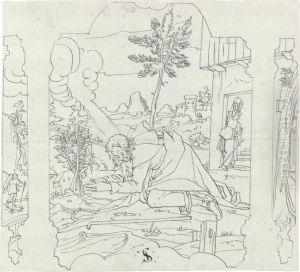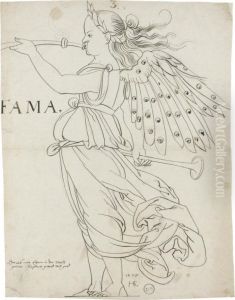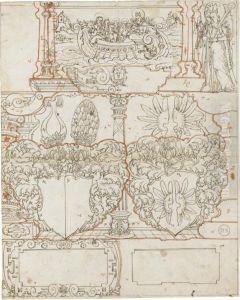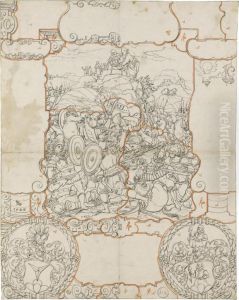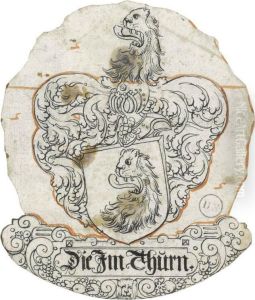Hans Caspar Lang Paintings
Hans Caspar Lang was a Swiss Baroque painter, engraver, and art dealer, born in 1646 in Winterthur, Switzerland, and died in 1711. His life and career were emblematic of the artistic transitions and cultural exchanges occurring in Europe during the late 17th and early 18th centuries. Lang's artistry was deeply influenced by the broader European Baroque movement, which was characterized by dramatic expressions, rich colors, and a dynamic interplay of light and shadow. However, Lang managed to infuse his works with a distinctive blend of northern European sensibilities, particularly drawing from the Swiss and German artistic traditions of his time.
Lang received his initial artistic training in Switzerland but, like many artists of his era, sought to broaden his horizons and skills by traveling extensively across Europe. His journeys took him to major art centers, including Italy, where he was profoundly influenced by the works of the Italian masters. This exposure helped him develop a versatile style that combined the grandeur of Italian Baroque with the meticulous detail characteristic of Northern European art. Despite the influence of Italian art, Lang retained a certain austerity and focus on narrative that were hallmarks of his Swiss-German heritage.
Throughout his career, Lang was not only a prolific painter but also an accomplished engraver and art dealer, activities that were quite interconnected during his time. As an engraver, he contributed to the dissemination of Baroque aesthetics beyond the confines of major art centers, making works accessible to a broader audience. His role as an art dealer allowed him to engage with a wide network of artists and patrons, further informing his artistic practice and helping to spread the Baroque style across Europe.
Lang's body of work includes religious and mythological scenes, portraits, and landscapes, reflecting the wide-ranging interests of Baroque artists. His paintings are known for their vibrant colors, detailed depiction of fabrics and textures, and the emotional intensity of the figures. Despite his considerable contributions to the art of his time, Hans Caspar Lang's name is not as widely recognized today as some of his contemporaries. Nevertheless, his works can be found in various European art collections, serving as a testament to his skill and the cultural richness of the Baroque period in Switzerland and beyond.
In summary, Hans Caspar Lang's artistic legacy is a fascinating blend of local traditions and the broader European Baroque movement. His life's work exemplifies the rich cultural exchanges of the 17th and early 18th centuries, marking him as an important figure in the history of Swiss art.
